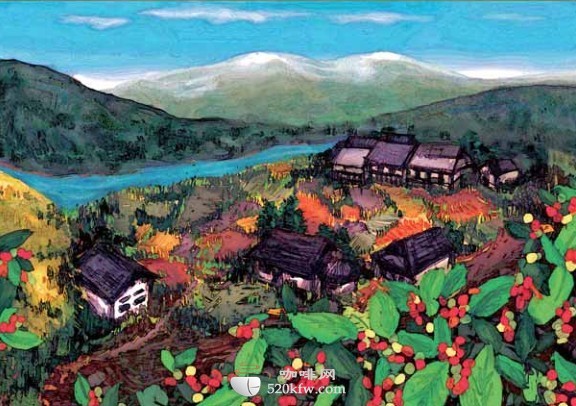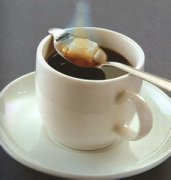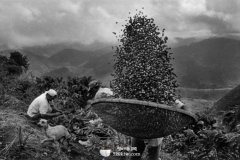A comprehensive introduction to Brazilian coffee from the world's boutique coffee producing area

Brazilian coffee refers to coffee produced in Brazil. There are many types of Brazilian coffee, most of which are unwashed and dried. They are classified according to the state of origin and port of shipment. Brazil has 21 states, 17 of which produce coffee, but four of them produce the most, accounting for 98% of the country's total production. Brazilian coffee taste with a low acidity, with the sweet and bitter taste of coffee, the entrance is extremely smooth, but also with a touch of grass aroma, in the fragrance slightly bitter, sweet smooth mouth, aftertaste can make people comfortable and carefree.
profile
Brazilian coffee refers to coffee produced in Brazil. There are many types of Brazilian coffee, and like other Arabica coffees, Brazilian coffee is called "Brazils" to distinguish it from "Milds" coffee. The vast majority of Brazilian coffee is unwashed and sun-dried, and is classified according to the state of origin and port of shipment. Brazil has 21 states, 17 of which produce coffee, but four of them produce the most, accounting for 98% of the country's total production: Parana, Sao Paulo, Minas Gerais and Espirito Santo, with Parana in the south producing the most, accounting for 50% of the total.
main varieties
Although coffee is diverse, Brazilian coffee is suitable for the taste of the masses. For example: coffee produced in northern coastal areas has a typical iodine taste, reminiscent of the sea after drinking. This coffee is exported to North America, the Middle East and Eastern Europe. Another coffee that is interesting and worth pursuing is rinsed Bahia coffee. This coffee is not easy to find, because Brazil is the world's largest coffee consumer after the United States, and many of the best coffees can only be found in its domestic market.
Brazilian coffee
In Brazil, the largest crop is Robett coffee. This coffee is sold in supermarkets. Brazilian Roscoff coffee, sold under the name Conillon, accounts for 15 percent of total production.
Old bourbon coffee is grown on some estates in Cerrado district of Minas Greais state in southeastern Brazil. These estates, such as Capin Branco and Vista Allegre, grow bourbon old-breed coffee that is also sold in the market. Although they come from the same region, these coffees have their own characteristics. Capin Blanco is softer than Vista Allegra, which is strong and dark and has lower acidity. However, like all Brazilian coffees, they are best served fresh because the older they are, the stronger the acidity. These coffee growers have organized themselves into the Speciality Coffee Association of Brazil.
introduced
Brazilian coffee refers to coffee produced in Brazil. Brazilian coffee comes in many varieties, and like other Arabica coffees, Brazilian coffee is known as
Brazilian coffee
"Brazils" is distinguished from "Milds" coffee. The vast majority of Brazilian coffee is unwashed and sun-dried, and is classified according to the state of origin and port of shipment. Brazil has 21 states, 17 states produce coffee, but four of them produce the most, accounting for 98% of Brazil's total production: Parana, Sao Paulo, Minas Gerais and EspiritoSanto. Parana in the south produces the most, accounting for 50% of the total production.
Low-acidity, medium-roast coffee beans from the coffee center of the world.
Brazil has been figuratively compared to the coffee world's "giants" and "kings." There are about 3.97 billion coffee trees, and small farmers now grow 75 percent of Brazil's coffee. Brazil has twice or even three times as many coffee producers as Colombia, which is the world's second-largest coffee producer.
Unlike in the past, Brazil's economy is now less dependent on coffee, which accounts for only 8 - 10% of GDP. Before World War II, Brazil accounted for 50% or more of the world's coffee production, and now it is close to 30%, but the country's influence on coffee worldwide, especially on coffee prices, is significant. For example, two frosts in 1994 caused a sharp rise in global coffee prices.
Coffee production has gradually become a science since the introduction of coffee trees from Guyane française (Guyana) in 1720. Before 1990, the Brazilian government strictly controlled the coffee industry, with both severe interference and price protection measures, and the state has always implemented minimum price protection measures for farmers, resulting in coffee overproduction. At one point before World War II, there were 78 million bags left in stock, which had to be burned or thrown into water.
Since 1990, when the free market opened up, the former Brazilian Coffee Authority (IBC) has been replaced by a non-investment administrative body of the state, the National Economic Association, which pursues a policy of non-interference and allows producers to negotiate directly with exporters. The activities of exporters are monitored by government legislation and legal exporters are registered by the relevant authorities.
characteristics
Brazil, the largest producer of coffee, accounts for one-third of global consumption of all grades and varieties, and has a place in the global coffee market. Although Brazil faces many times more natural disasters than other regions, its arable area is enough to compensate.
Brazil coffee fruit
There are many kinds of coffee here, but its industrial policy is large and cheap, so there are not many excellent coffee, but it is a good choice to mix other coffees.
One of the most famous is Sandos coffee, its taste is mellow, neutral, it can be boiled directly, or mixed with other types of coffee beans blend coffee, is also a good choice.
Other types of Brazilian coffee, such as Rio, Parana, etc., can be produced in large quantities without too much care. Although the taste is rough, it is a kind of inexpensive coffee. Due to its distribution throughout Brazil, the solid quality varies, and there are its own standards (NO.2~NO.8 according to the number of impurities, NO.13~NO.19 according to the size of beans, divided into six grades according to taste). Almost all Arabica varieties are of good quality and stable prices, the most famous being "Santos de Brazil", which has been a necessity of blended coffee since ancient times and is familiar to the public. Recently, the evaluation of "Tolma Cup" is also very high.
● High quality beans: mulberry multi-modal NO.2, size NO.18
● Characteristics of taste: mild, sour and bitter, soft fragrance.
● Best cooking degree: moderate cooking
made in
Brazil in terms of natural conditions, in the tropical region, the northern part of the tropical rain forest climate, hot and humid all year round, suitable for the growth of tropical crops, coffee trees for sunny crops, sufficient sunlight for its growth conditions. Historically, Brazil has long been a Portugal colony. To meet the needs of Western Europe,
Brazilian coffee
Coffee in Brazil remained a mainstay industry for a long time as a result of long-term monoculture and the development of a tropical plantation economy. From the market point of view, coffee and its processed products are rich in caffeine and have an exciting effect. They play an important role in the working group dominated by mental workers, so they play a huge role in modern society, so the market is broad. Brazil ranks first in coffee production in the world.
taste
Brazilian coffee taste with a low sour, with coffee sweet and bitter taste, the entrance is very smooth, but also with a touch of grass fragrance, in the fragrance slightly bitter, sweet smooth mouth, aftertaste can make people comfortable. There are no outstanding advantages to Brazilian coffee, but there are no obvious defects. This kind of mild and smooth taste, low acidity, moderate alcohol and light sweetness are all mixed together. It is the best test for taste buds to distinguish them one by one. This is why many Santos fans like this coffee. Because it is so mild and ordinary, Santos is suitable for ordinary roasting. Suitable for brewing in the most popular way, it is the best raw material for making Italian espresso and all kinds of fancy coffee.
brewing
Single item production
Roasting: More and more people are beginning to prefer to roast their own coffee beans, because usually coffee beans can only be kept fresh for 1 to 7 days after roasting, and then they will begin to lose flavor, leaving only bitter taste, but no mellow taste. So, roasting yourself ensures the freshness of the coffee beans.
Traditional roasters are roller type, which has the characteristics of stewing, which will make the coffee beans older and taste fuller. The household roaster can roast half a pound of coffee beans at a time. The roasting time (including cooling and beans) takes about 21~25 minutes. If you want to roast deeply, just increase the time. When using, just put in the raw beans, set the baking degree, press the start button, from baking to cooling, the baking machine can be automatically completed.
coffee maker
Grind: Coffee makes the ultimate sacrifice in order to blend with water-crushing. Coffee before brewing, be sure to grind the beans into fine particles, increase the contact area between water and coffee, in order to extract delicious. In fact, the grinder is more important than the coffee machine, and most people now choose the "saw-tooth grinder" because it can quickly and stably grind a uniform coffee powder. The operation method of saw-tooth grinding machine is very simple. Generally speaking, it has two setting functions, one is to set the grinding degree, and the other is to set the grinding time. Abrasion is mostly represented by Arabic numerals, the smaller the number, the finer the grinding. Above the grinder was a hopper containing unground beans, and below it was a drawer for ground coffee. When choosing to buy a bean grinder, you should pay attention to its power, usually between 70 watts and 150 watts, the higher the better, the higher the power of the bean grinder, the faster the grinding speed, the shorter the time for the coffee powder to stay between the serrations, and the more able to grind out low temperature coffee powder.
Brewing: To brew a good cup of coffee, in addition to fresh coffee powder and slightly harder water, of course, there must be a handy brewing tool. There are three main types of coffee brewing machines commonly used.
Drip filter: wet coffee powder with water, let coffee liquid to fall naturally through the filter cloth or filter paper speed, flow to the container. Basically, this method does not soak the coffee powder, just let the hot water slowly pass through the coffee powder. Drip cups and electric coffee machines belong to this category, is the simplest brewing tool, can brew clean and bright color coffee.
Follicular: coffee powder into the pot, soaked in hot water for a few minutes, and then filtered by filter cloth or filter to form a cup of coffee liquid.
Brazilian coffee
Siphon pot, drip pot, Belgian coffee pot and Vietnamese coffee pot, etc., all belong to follicular brewing tools, they all have a soaking process, thus forming a more complex taste.
High-pressure coffee: Pressurized hot water is used to penetrate the compacted coffee powder to produce a thick cup of coffee. Tools in this form include mocha pots and espresso machines.
Fast brewing method: can use Italian espresso machine, faster coffee brewing method. Italian espresso machine can continuously extract several cups of coffee, the high pressure in the boiling process can dissolve the oil and colloid emulsion in the coffee beans, and the essence of the beans is completely extracted through pressure, making the brewed coffee more concentrated, taste and aroma better.
formulated in admixture
Add the coffee to the cup, stir it slightly, pour the same amount of milk into the milk pan, bring it to a boil over low heat, add the cream before foaming, and pour it over the coffee without waiting for the foam to disappear.
Important Notice :
前街咖啡 FrontStreet Coffee has moved to new addredd:
FrontStreet Coffee Address: 315,Donghua East Road,GuangZhou
Tel:020 38364473
- Prev

The choice of sugar in fine coffee has three different tastes.
There are mainly three kinds of sugars for coffee: yellow sugar (sucrose), white sugar (refined sugar) and cube sugar (crystal refined sugar compression drying).
- Next

Guatemalan coffee boutique coffee knowledge
Guatemalan coffee: produced in Guatemala, this bean belongs to bourbon coffee beans, is one of the more sour varieties, mellow and slightly wild taste, the most suitable for blending coffee. History a cup of Antigua coffee in Guatemala seems to let us see the sudden disappearance of the mysterious Mayans thriving in the ancient land, history brushed away their existence.
Related
- Beginners will see the "Coffee pull flower" guide!
- What is the difference between ice blog purified milk and ordinary milk coffee?
- Why is the Philippines the largest producer of crops in Liberia?
- For coffee extraction, should the fine powder be retained?
- How does extracted espresso fill pressed powder? How much strength does it take to press the powder?
- How to make jasmine cold extract coffee? Is the jasmine + latte good?
- Will this little toy really make the coffee taste better? How does Lily Drip affect coffee extraction?
- Will the action of slapping the filter cup also affect coffee extraction?
- What's the difference between powder-to-water ratio and powder-to-liquid ratio?
- What is the Ethiopian local species? What does it have to do with Heirloom native species?

